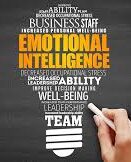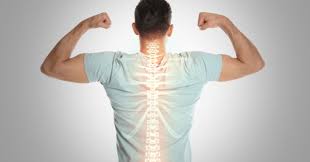As we age, maintaining strong bones and muscles becomes increasingly important for overall health and mobility. A healthy musculoskeletal system helps prevent falls, fractures, and chronic conditions like osteoporosis and sarcopenia (muscle loss). The good news is that there are simple, effective ways to keep your bones and muscles strong as you grow older.
Here’s how you can support bone and muscle health throughout the aging process:
1. Incorporate Weight-Bearing and Resistance Exercises
Exercise is essential for maintaining both bone density and muscle mass. Weight-bearing and resistance exercises, in particular, are key to building strength and preventing age-related decline.
Best exercises for bone and muscle health:
- Weight-bearing exercises like walking, hiking, dancing, and stair climbing put stress on your bones, encouraging them to grow denser and stronger.
- Resistance exercises such as weightlifting, using resistance bands, or bodyweight exercises (like squats and push-ups) help build and maintain muscle mass.
Tip: Aim for at least 30 minutes of moderate physical activity most days of the week, with resistance exercises included at least twice a week.
2. Ensure Adequate Calcium Intake
Calcium is vital for bone health, as it’s the main mineral found in bones. As you age, your body’s ability to absorb calcium decreases, making it even more important to get enough from your diet.
Foods rich in calcium:
- Dairy products like milk, yogurt, and cheese
- Leafy green vegetables such as kale, spinach, and collard greens
- Fortified plant-based milks (e.g., almond, soy, or oat milk)
- Fish with edible bones like sardines and salmon
Tip: If you struggle to get enough calcium through food, talk to your healthcare provider about whether a calcium supplement is right for you.
3. Get Enough Vitamin D
Vitamin D plays a crucial role in helping your body absorb calcium and maintain healthy bones. Unfortunately, many older adults don’t get enough vitamin D, especially those who spend limited time outdoors or live in areas with little sunlight.
Ways to get more vitamin D:
- Spend time in sunlight (about 15-30 minutes a day, depending on skin tone)
- Eat vitamin D-rich foods such as fatty fish (salmon, mackerel), fortified cereals, and eggs
- Take vitamin D supplements if recommended by your doctor
Tip: Ask your doctor to check your vitamin D levels, especially if you live in a region with long winters or limited sun exposure.
4. Prioritize Protein for Muscle Health
Protein is essential for building and maintaining muscle mass, which naturally decreases as you age. Eating enough high-quality protein can help slow muscle loss and support muscle repair.
High-protein food sources:
- Lean meats such as chicken, turkey, and beef
- Fish and seafood
- Plant-based options like lentils, beans, tofu, and quinoa
- Eggs and dairy products
Tip: Spread your protein intake throughout the day, aiming for 20-30 grams per meal to support muscle maintenance.
5. Maintain a Healthy Weight
Carrying extra weight can put additional stress on your bones and joints, increasing the risk of osteoporosis and osteoarthritis. On the other hand, being underweight can lead to bone loss and muscle weakness. Maintaining a healthy weight through a balanced diet and regular physical activity is important for long-term bone and muscle health.
How to maintain a healthy weight:
- Focus on nutrient-dense foods such as fruits, vegetables, whole grains, lean proteins, and healthy fats
- Avoid excessive consumption of processed foods and sugary snacks
- Stay physically active to support healthy weight management
Tip: Work with a healthcare professional or nutritionist to find a weight management plan that suits your needs as you age.
6. Avoid Smoking and Limit Alcohol
Both smoking and excessive alcohol consumption can negatively impact bone and muscle health. Smoking reduces blood flow to the bones and muscles, while alcohol can interfere with the body’s ability to absorb calcium.
How to reduce these risk factors:
- If you smoke, seek support to quit through counseling, nicotine replacement therapy, or medications.
- Limit alcohol consumption to no more than one drink per day for women and two drinks per day for men, as recommended by health guidelines.
Tip: Making lifestyle changes to quit smoking and reduce alcohol intake can significantly improve your bone and muscle health, along with your overall well-being.
7. Stay Hydrated
Hydration is often overlooked when it comes to bone and muscle health, but it plays a critical role. Dehydration can lead to muscle cramps, joint pain, and increased risk of falls and injuries.
How to stay hydrated:
- Drink water regularly throughout the day, even if you don’t feel thirsty
- Include water-rich foods like fruits, vegetables, and soups in your diet
- Limit caffeinated and sugary drinks, which can contribute to dehydration
Tip: Carry a water bottle with you and sip throughout the day to ensure you’re staying hydrated.
8. Monitor Bone Density and Muscle Strength
As you age, it’s essential to stay proactive about your bone and muscle health. Regular check-ups with your healthcare provider can help you monitor bone density and muscle strength and catch potential issues early.
What to ask your doctor:
- Request a bone density scan (DEXA scan) to assess your bone health, especially if you’re over 50 or have risk factors for osteoporosis.
- Ask about your muscle health and ways to improve or maintain strength, especially if you’re noticing signs of weakness or reduced mobility.
Tip: Be proactive in discussing your concerns about bone and muscle health with your healthcare provider, and follow their advice for maintaining a healthy, active lifestyle.
Conclusion
Maintaining strong bones and muscles as you age doesn’t have to be complicated. By incorporating regular physical activity, eating a balanced diet rich in calcium, protein, and vitamin D, and making healthy lifestyle choices, you can support your bone and muscle health well into your later years. Remember that small, consistent efforts in your daily routine can have a big impact on your overall well-being and help you stay active, independent, and resilient as you age.

